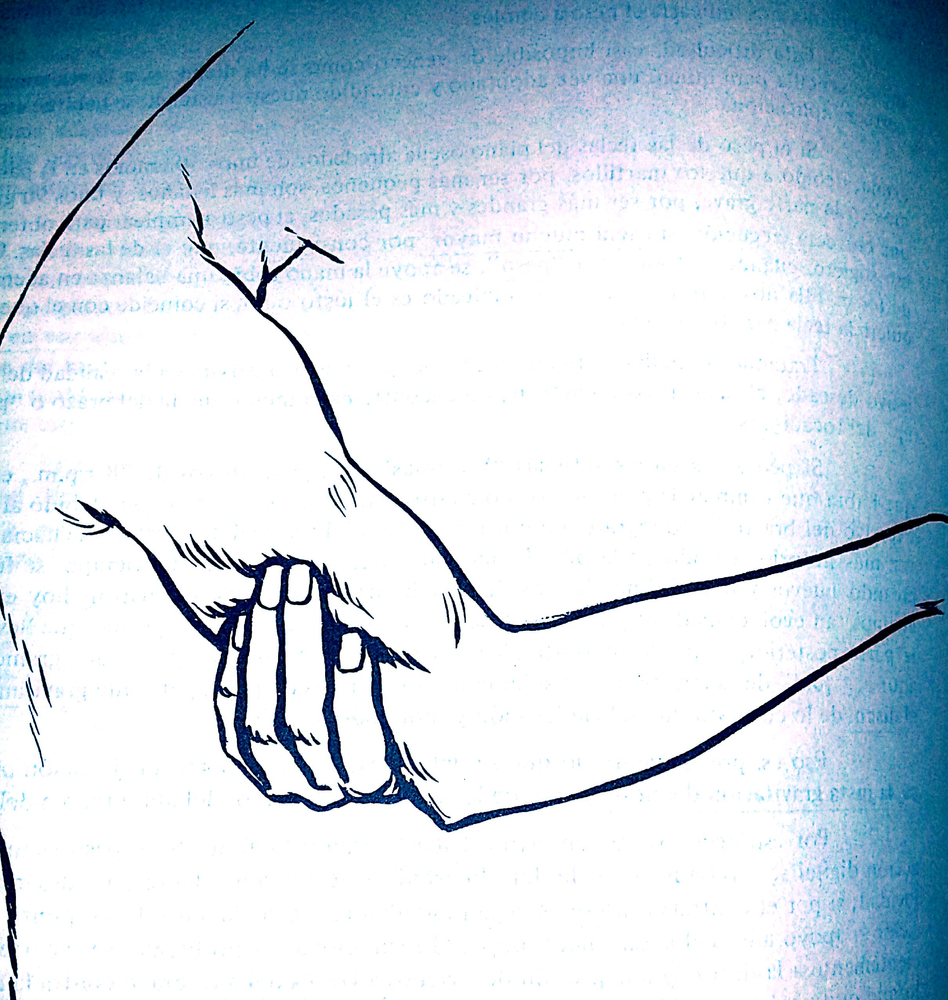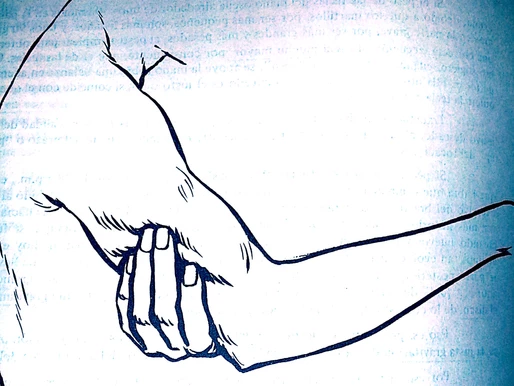Scaramuzza Technique, Uncategorized
5th section. Chapter I. –with some elaboration by J. Rezzuto-
We need to highlight that, for all pianists, the most difficult muscle to manage is the triceps. It should remain always relaxed unless directly involved in the action. The specific movements which actually involve the usage of the triceps are: forearm and arm movements.

The drawing above shows how to check the tension yourself while playing. Any tension related with the incorrect use of this muscle will derive in a blockage of our performance abilities. If there is any noticeable stiffness in that muscle it means the fingers are excerting too much pressure on the surface of the keys.
There is a very delicate balance between weight and finger pressure that we need to keep under control if we want to perform professionally.
During our first performances we experience stress levels which induce a state of alarm or restlessness. This emotional situation sets our system on guard and therefore our muscles contract. The main issue about public performances is self-awareness; we are going to talk about this matter later on these posts.
Coming back to Scaramuzza and Italy, the birth place of professional piano performance, it is said that “la nerviosita e la matatia di tutti i pianisti” (stress is the main sickness every pianist has to defeat). Two of the main contributors to this phenomenon are the impossibility of travelling around with our instrument and the lack of practise along with other instrumentalists that often.
A thorough expression plan constitutes the main way of sorting out the stress coming from public performances and, more specifically, of evading the distraction factor that experience represents to us. The acknowledgement of how musical syntax behaves and the way it influences the dynamics we choose, constitute the main focus for a professional performer during any public performance. Applying all our intellect to driving those expression vectors is the only way we can keep our minds focused and far from the distractions derived from any public performance situation.
There is a great analogy written by A. Cardellicchio which compares the experience of performing in front of an audience with driving. Initially we really struggle to avoid getting distracted by all the stimulation coming from all directions, but later on, when we manage to incorporate all the necessary skills, we can deal with them with no effect on the way we drive.
Philosophically speaking, we need to search for peace of mind at all times. We will always perform in the same way as how we normally behave on our everyday lives. Stress should become then a source of expression instead of a source of instability. The public performance brings with it the lack of precision, but that lack of precision is diminished by the incorporation of a solid and efficient expressive plan.
Regular gatherings amongst pianists are the most successful training strategy towards managing public performance stress. This practise, if lead professionally, will enhance our pianistic perception in an outstanding way. The most important thing we need to do is to think musically as it is the only route towards simplification.
End of Chapter I

